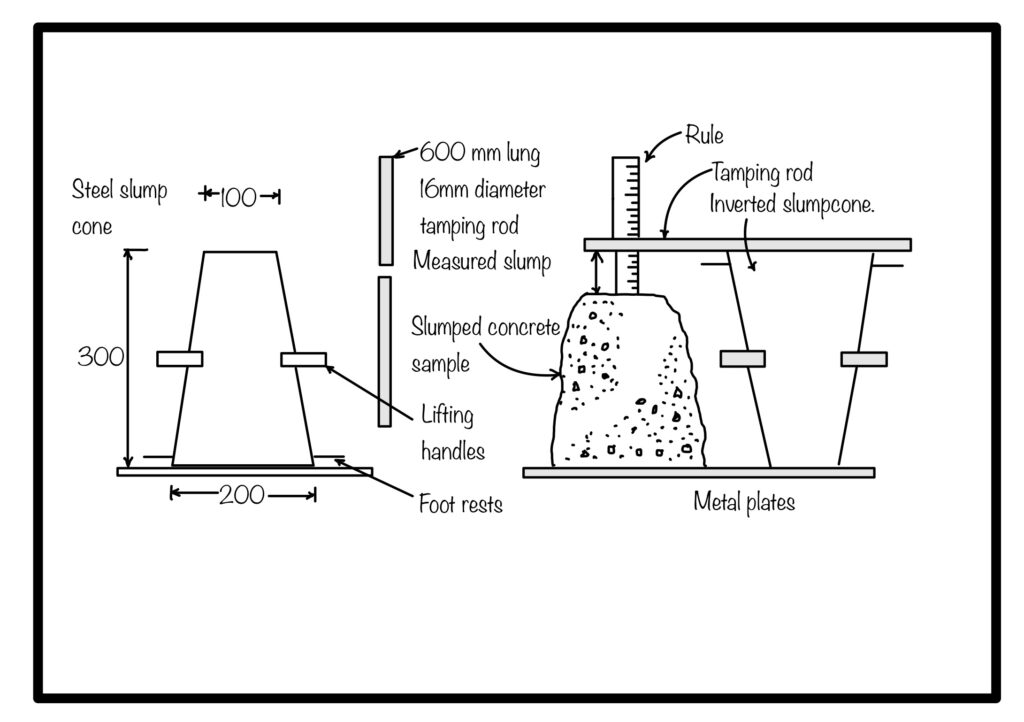Workability of concrete is defined as the ease with which concrete can be handled efficiently. It is regulated by the percentage of water used for the concrete mix. a workable concrete should be able to compact 100 % by its own irrespective of the mode of compaction and place of deposition. Workable concrete is the one which exhibits very little internal friction between particle and particle or which overcomes the frictional resistance offered by the formwork surface or reinforcement contained in the concrete with just the amount of compacting efforts forthcoming.
Factors affecting workability
All the factors which are responsible for the lubricating affect of concrete affects workability. Some of the factors are :
- water content
- mix proportions
- size of aggregate
- shape of aggregate
- surface texture of aggregate
- grading of aggregate
- use of admixtures
Measurement of workability
Workability is a complex property, which is very important to estimate, as it defines the ease with which one can handle the concrete and thus will affect the overall efficiency of construction. There are many methods using which you can measure the workability of concrete.
- Slump test
- Compacting factor test
- Flow test
- Kelly Ball test
- Vee Bee consistometer test
These are the few methods using which you can measure the workability. But at site all these methods cannot be possible because of its apparatus complexity. Mostly we use slump test and compacting factor test on site.
In this post I will discuss about slump test as it is the most widely used technique on laboratory and also on site.
Slump Test
Workability is measured using slump value, output of a slump test. Factors which affects workability :
- Properties of materials
- Level of compaction
- Air content
- Admixtures …. and many more
Apparatus used to measure workability:
- Slump cone – frastum of a cone 30 cm height, 20 cm bottom diameter, 10 cm top diameter
- Tamping rod – 16 mm diameter, 60 cm long

Procedure:
- Before going into this step you should know how to do the concrete mix design.
Yess, you can check these post to improve your knowledge on “Concrete mix design procedure as per IS 10262:2009 & IS 456:2000“, with examples –M10 M20 M25 M30 M40 M50.
2. Prepare the design mix , calculate the weight of concrete required for casting 6 cubes + for slump test.
3. Clean the surface of the mould and grease uniformly it with oil.
4. Place the mould on top of a glass plate, and fill the mould with the concrete mix in different layers of equal thickness.
5. After each layer of concrete mix tamp for 25 times using the tamping rod, so that the concrete mix is well compacted.
6. Repeat the steps till the concrete mix fills the mould, and then remove the excess concrete and level the surface with a trowel.
7. Then next step is to remove the mould, i.e,raise the mould in vertical direction .
8. Measure the value of slump using a steel scale, basically it is the vertical settlement .
Note : vertical settlement is the difference in the height of the mould and the concrete mix specimen.
Why it is important to measure the workability on site ?
I want to explain the importance of this test by taking the case of a premix concrete or ready mix concrete. In such type of concrete the mixing plant and construction site is at some distance. So it becomes very important to check the quality of concrete when it is on site. Many admixtures are used in order to alter the properties of concrete and improve its quality.

Android Apps
⭐️ ⭐️ ⭐️ ⭐️ ⭐️ 1000+ | 400,000 + Downloads (Cumulative)
At eigenplus, our goal is to teach civil engineering students about structural analysis and design starting from the fundamental principles. We do this with the help of interactive android applications and accompanying web articles and videos.
Our apps have helped more than 400 thousand students across the world to understand and learn the concepts of structural engineering. Check out our apps on the google play store.